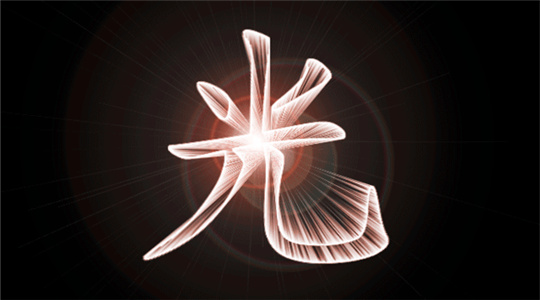
当前课程知识点:Approaching the Mysterious Traditional Chinese Medicine > Chapter 4 The Dispute of Varieties > 4.3 Mutong-A Good or Evil herb > 4.3.2 Tracing the Origin of Mutong
返回《Approaching the Mysterious Traditional Chinese Medicine》慕课在线视频课程列表
Chapter knowledge
1.The origin of Mutong
2.Plant morphology of Mutong
3.Character of Mutong
4.Plant morphology of Guanmutong
5.Character of Guanmutong
6.Plant morphology of Chuanmutong
7.Character of Chuanmutong
1.The origin of Mutong
Chinese Pharmacopoeia ver. 2015 stipulated that Mutong originated from dry rattan from Mutong, Sanyemutong and Baimutong in Family Lardizabalaceae.
2.Plant morphology of Mutong
Mutong is a deciduous wood liana with palmate compound leaf metabiosis or fasciation on brachyblast.
Usually it has 5 small obovate or eclipse leaves with a altar corymb-like racemose inflorescence structure.
It has imperial purple flowers divided into male and female ones,blossoming on the same spray.
As the name suggests, Sanyemutong is born with 3 oval or oblong leaflets that the size is rather variable.
Its marginal lobe is undulating and the fruit is ovale.Since it matures and cracks in August of Lunar Calendar, an old saying goes "The fruit booms in August".
Baimutong is a subspecies of Sanyemutong, which has entire thick leaflets.
3.Character of Mutong
Mutong has a slightly cylindrical shape. The surface is beige or taupe covered with a rough skin and irregular cracks and furrows.
It has protuberant lenticels,swelling node or inconspicuous score break on lateral branch.
The plant is light but solid and not quickly broken. Its section is irregular and skin is rather thick,which is sandybrown with canary yellow granular spots.The xylem is yellowish white with radial patterns. The medulla is narrow or sometimes even hollow. Mutong has a slight smell and bitter and astringent flavour.
4.Plant morphology of Guanmutong
Guanmutong comes from the dry rattan of Northeast Birthwort of Family Aristolochiaceae. Its plant is a winding lignification big liana with heart-shape alternative leaves, as well as blunt front end, heart-shaped base and entire lobe. It has solitary flowers and wide oval bracts with white villi on it.The perianth is like a curving intumescent tube.3 lobes lies on the front end. Each lobe is slightly explanted wide triangles and covered with purple stripes.
5.Character of Guanmutong
Guanmutong has a long curving cylindrical shape.After truncation on both ends, the surface shows sallow or pale sandybrown with shallow furrow and some spotted tan cork, as well as slightly inflated knots. The slices sections are yellow or yellowish white with a narrow light color cortex and a wide xylem. There are duct with eyelets arranged by multilayer concentric circles,which intersects at whitish rays like spider web. Generally its medulla is unclear.
6. Plant morphology of Chuanmutong
Chuanmutong is the dry rattan of Xiaomutong or Xiuqiuteng of Family Ranunculaceae.
Xiaomutong is a evergreen climbing shrub with three opposable compound leaves.
Xiuqiuteng is a deciduous climbing shrub with 3 lobes and edge sawteeth on the front end leaflets.
7. Character of Chuanmutong
Xiaomutong has a long curving cylindrical shape with a sandybrown or tan surface.There are longitudinal furrows and ridges on it. Its remaining cortex is easily torn and the knots are inflated. It has a stiff texture with round or slightly plagiotropous sections. Its edge irregularly lies. The remaining cortex is sandybrown and xylem is light sandybrown or wheat,which is rather wide covered with stoma that is arranged in concentric circular laminated striations and divided into several beams by whitish rays.
The medulla grows in the middle, whitish or sandybrown,with cavity in the middle sometimes. It is a light substance that is not easy to be broken,and the section is irregular.
返回《Approaching the Mysterious Traditional Chinese Medicine》慕课在线视频列表
-The nature, purpose and requirements of the course
-Introduction assignment
-1.1 The Magic Herb Renshen-Murder not Condemned
--1.1.2 The efficacy of Renshen
--Section test
-1.2 The Brilliant General Dahuang-Rescuer not Credited
--1.2.1 The previous life of Dahuang
--1.2.2 The efficacy of Dahuang
--Section test
-1.3 Dihuang-A Good herb Tonifying Blood
--1.3.1 Talk about the past and present of Dihuang
--1.3.2 Talking about fresh, dry, unprocessed, and prepared four categories of Dihuang
--1.3.3 A dual use of prepared and unprepared Dihuang
--Section test
-1.4 Fuzi-A Good and Evil herb
--1.4.1 Jiangyou’s Fuzi Comes from Longan’s Seed
--1.4.2 Different product specifications of Fuzi spring from the selfsame root
--Section test
-Chapter 1 assignments
-2.1 A Large Family of Wutou
-- 2.1.2 Efficacy of Wutou family members
--2.1.3 Aconitine's toxicity is a double-edge sword
--Section test
-2.2 Two Similar Medicines that Hit Home (Caowu, Chuanwu)
--2.2.1 The Best Poison in Cold Weapon Era
--2.2.2 Past and Present Life of Wutou
--2.2.3 Two brothers with distinct personalities
--Section test
-2.3 Shouwu-A good or Evil Medicine
--2.3.1 The Past Life of Heshouwu
--2.3.2 Heshouwu and the toxin inside of it
--Section test
-2.4 Mahuang-A medicine Good at Inducing Sweat
--2.4.1 Is Mahuang a good or evil herb?
--2.4.2 Wu Yecao- with the efficacy of inducing sweating and astringing sweating
--Section test
-Chapter 2 assignments
-3.1 Tianma- A herb who can run without feet
--3.1.1 The no-feet Tianma escapes
--3.1.2 How does Tianma become a common medicine
--3.1.3 Wind-stabilizing efficacy of Tianma
--Section test
-3.2 Two Valuable Musketeers Living in Desert (Roucongrong, -Suoyang)
--3.2.2 I am ugly, but I am gentle
--Section test
-3.3 Wisdom Parasitic Eaters (Tusizi, Hujisheng)
--3.3.1 Tusizi's intelligent life
--3.3.3 Kissing custom under a Hujisheng
--3.3.4 The diner on the tall building
--Section test
-4.1 Two Musketeers for Dryness and Removing Phlegm (Banxia, Tiannanxing)
--4.1.1 The origin of three childes of the famous family
--4.1.2 The Three Musketeers of Araceae family
--4.1.3 The efficacy of Banxia and Tiannanxing
--Section test
-4.2 Skillful Identification of the Four kinds of Ginger (Jianghuang, Pianjianghuang, Yujin, Ezhu)
--4.2.1 Four sisters of Zingiberaceae
--4.2.2 Characteristics of Zingiberaceae four sisters
--4.2.3 Efficacy of Yujin, Ezhu, Jianghuang and Pianjianghuang
--Section test
-4.3 Mutong-A Good or Evil herb
--4.3.1 The devil hiding behind the quintessence of Chinese culture
--4.3.2 Tracing the Origin of Mutong
--Section test
-4.4 The Brother Medicines with the Same Function (Chishao, Baishao)
--4.4.1 Traceability of Baishao and Chishao
--4.4.2 Source and Processing Differences of Baishao and Chishao
--4.4.3 The efficacy of Baishao and Chishao
--Section test
-Chapter 4 assignments
-5.1 The Whirl Chongcao
--5.1.1 The reason why Dongchongxiacao appears like a worm in winter but a plant in summer
--5.1.2 Why Dongchongxiacao is called "soft golden "
--5.1.3 Character identification of Dongchongxiacao
--Section test
-5.2 The Magic Fuling
--5.2.1 The medicinal and edible efficacy of Fuling
--5.2.2 Fuling is made from the spirit of the roots of pines
--5.2.3 A gentle and modest gentleman of Fuling
--Section test
-Chapter 5 assignments
-6.1 The Dad Who can Give Birth to Child (Haima, Hailong)
--6.1.3 A close relative of Haima—Hailong
--Section test
-6.2 Chantui-Rebirth after Nirnava
--6.2.2 Chantui’s medicinal character
--Section test
-6.3 Tubiechong- Breaking and Dispelling the Static Blood
--6.3.1 The culture and origin of Tubiechong
--6.3.2 Tubiechong’s life and Identification between male and female
--Section test
-6.4 Lurong-Generating the Essence and Tonifying Marrow
--6.4.1 Lurong’s origin and specifications
--6.4.2 There are hundreds of treasures in a deer
--Section test
-Chapter 6 assignments
-7.1 Xionghuang Discussed in the Dragon Boat Festival
--7.1.1 The deworming efficacy of Xionghuang
--7.1.2 The relationship between Xionghuang and vermilion pill
--7.1.3 Identification and characteristics of Xionghuang
--Section test
-7.2 Zhusha-the Finest Medicine for Dispelling Pathogens
--7.2.2 Zhusha and eternal immortal pill
--7.2.3 Zhusha’s specifications and efficacy
--Section test
-Chapter 7 assignments
-Chenxiang-the Priceless Medicine
--8.1.1 The King of the fragrance
--8.1.2 What Chenxiang is and how Chenxiang comes into being
--Section test
--Chapter 8 assignment


